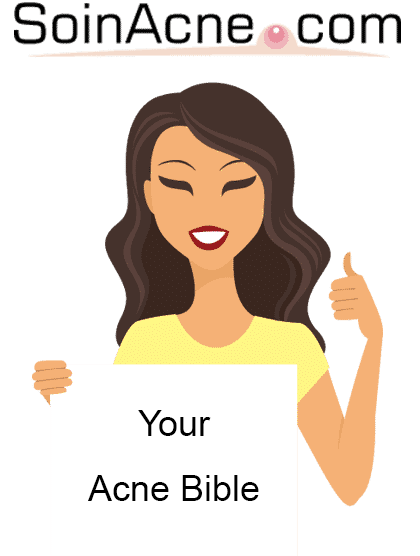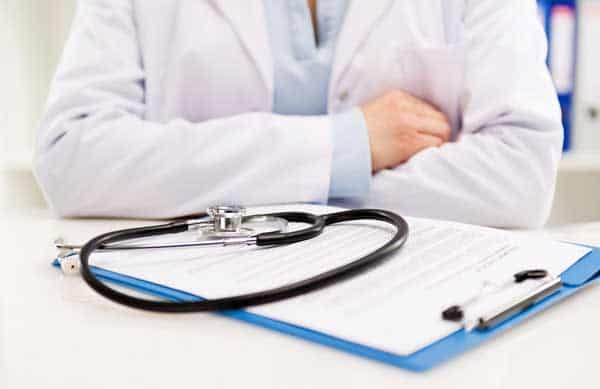Page Content
Some studies have shown that acne is primarily a hormonal phenomenon: it is androgens that control the development of acne lesions.
Although its causes are not yet exactly determined, studies have still been able to allow for the establishment of many treatments – based on the manifestations of the disease – designed to treat acne lesions.
So there are several treatment methods to deal with these lesions. They range from drug treatments to natural treatments and some surgical methods.
This page introduces you to some of the most commonly used acne treatment methods and provides links to pages with more detailed information.
Anti-acne diet
In recent years, there have been a lot of conflicting ideas about how what we eat influences the onset or development of acne.
Some people believe that food plays a significant role in the appearance of acne lesions, while others think that it has nothing to do with it.
However, to form one’s personal opinion on the impact of diet on acne, one could take into account a simple fact: while acne affects a large Western population, it does not exist among some Indian peoples.
Indeed, the latter usually have a low glycemic index diet. However, when they adopt the Western diet, the rate of people with acne increases and becomes similar to that observed in Western countries.
The deduction seems simple: foods with a glycemic index (GI) play a role in acne.
Apart from these foods, those rich in omega-3 fatty acids and zinc also have beneficial aspects.
Natural/homemade acne treatments
Natural treatments can be a interesting alternative to drug treatments when one cannot afford the cost of these treatments, cannot stand their side effects, or simply when they prove ineffective.
Many natural treatment methods can be performed directly at home, without the need for medical advice or unavailable ingredients.
Indeed, it is possible to benefit from exfoliating, disinfecting, antimicrobial and anti-inflammatory virtues other than by ingesting or applying medication.
Drug treatments
Among the most regularly used drug treatments are antibiotics, isotretinoin, benzoyl peroxide and azelaic acid.
Antibiotics
Antibiotics are often used in the treatment of acne.
However, since acne is not an infection, one might question the usefulness of antibiotics.
In reality, in the case of acne, it is the anti-inflammatory function of these antibiotics that one seeks to exploit. Antibiotics are primarily used for the treatment of severe acne, generally characterized by inflammatory lesions (papules and pustules) appearing as a result of inflammation of the pilosebaceous follicle.
Because the inflammation is caused by Propionibacterium acnes, it is in an effort to combat the action of this bacteria that antibiotics are prescribed.
Having strong contraindications and possibly having non-negligible side effects, they are to be used with the utmost caution.
Isotretinoin
Isotretinoin is practically considered the most effective treatment for acne.
It is part of the retinoid group along with tretinoin, of which it is a stereoisomer, and adapalene; two other molecules that are also used in the treatment of acne.
As with antibiotics, isotretinoin has anti-inflammatory activity and is, therefore, effective against severe acne lesions.
It works by suppressing the action of sebaceous glands responsible for sebum secretion and decreases their size.
Existing on sale under different names around the world, it can however have serious side effects on health: its prescription is therefore extremely well supervised.
Benzoyl peroxide
Benzoyl peroxide is a frequently used topical treatment for acne lesions, especially for moderate acne.
It has an antibacterial and anti-inflammatory action and is, therefore, effective on papules (often painful red pimples).
Its mode of action is similar to that of isotretinoin: its antibacterial function combats the action of Propionibacterium acnes and thus prevents inflammation of the pilosebaceous follicle.
Benzoyl peroxide also has a keratolytic action (it destroys keratocytes) and it regulates the secretion of sebum by the sebaceous glands (sebostatic action).
Found mainly in gel or cream form, this molecule can have rather troublesome side effects.
Azelaic acid
Azelaic acid’s action is similar to that of benzoyl peroxide: it has antimicrobial and anti-inflammatory function and thus helps to decrease bacterial population and inflammation.
However, compared to peroxide, azelaic acid is more indicated for sensitive skin.
Available in several commercial forms, its results generally begin to be seen after four weeks of treatment.
As with any medical substance, azelaic acid can have undesirable side effects (especially when combined with other active ingredients).
Laser treatments for acne
There are many reasons why people with acne may turn to laser treatments.
Generally speaking, they are used when topical or general treatments have failed or when they cause allergies.
These lasers – which are now found in several forms with different features – are used not only to treat acne, but also to treat scars left by severe acne.
Precautions for women of childbearing age
Not all treatments are indicated for women of childbearing age: some molecules and active ingredients may pose great risks.
Although local treatments generally have several advantages, they also present a teratogenic risk in women.
Thus, cyclins and retinoids are strictly contraindicated for pregnant women, and women of childbearing age must undergo regular follow-up with a dermatologist.

